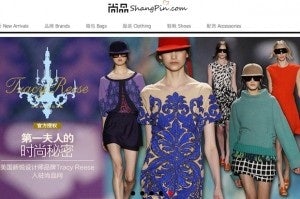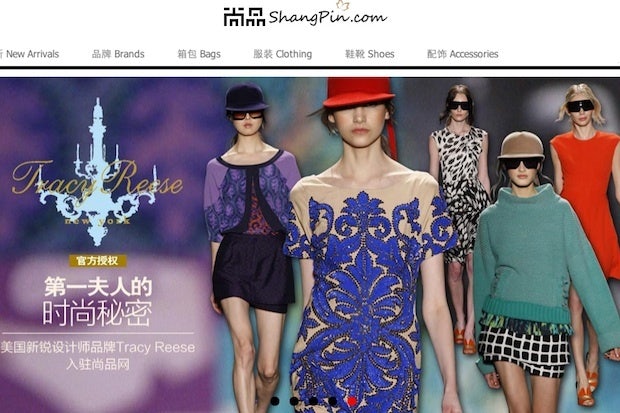Strategy Of Choice: Keeping The Client In Mind#

This week, the two-year-old Beijing-based e-tailer
Shangpin#
, which bills itself China’s first members-only online retailer of authorized designer and contemporary fashions, announced the launch of its full-price, O2O, retail section, which will offer Chinese consumers access to current season designer and contemporary fashion from nearly 80 brands, many of which have never before been available in China. However, with American and European heavyweights such as Macy’s, Neiman Marcus and Net-A-Porter already adopting a full-price, O2O model and teaming up with Chinese luxury sites including VIPStore’s
Omei#
,
Glamour Sales#
, and
Shouke#
, how will Shangpin fare amidst such fierce (and well-capitalized) competition?
On the face of it, we speculate that Shangpin’s transition from a discounted retail site to one more focused on full-ticketed prices will be met with its fair share of difficulties, especially considering the reputation that China's online consumer has for always hunting for a good deal and demanding plenty of post-sale perks. Yet Shangpin may have a few tricks up its sleeves that could give it an edge in the increasingly cut-throat luxury O2O market.
First, Shangpin has prioritized top brand partnerships#
, collaborating with high-profile luxury brands like Italy’s M Missoni, Diane Von Furstenberg and Stuart Weitzman as well as more niche American labels like Cynthia Rowley, Laundry by Shelli Segal, Charlie Jade, and Aryn K. Most recently, Shangpin nabbed Tracy Reese -- whose designs hit fashion headlines this week after being donned by First Lady Michelle Obama at the Democratic National Convention -- as well as American designer label Milly. Given that brands like these probably wouldn't otherwise be able (or willing) to invest heavily in a physical presence in China to take on high-end heavyweights, teaming up with a local e-tailer like Shangpin that appeals to the right (e.g., brand-savvy and relatively wealthy) shopper demographic is a more cost-effective and manageable option. As Tracy Reese -- who plans to eventually open brick-and-mortar stores in China -- said this week, “[China's] a market that we want to explore...[but we] need to learn so much more to do it effectively. The site gives us great exposure to the market and Chinese consumer.”
China's more seasoned consumer benefits from Shangpin's brand partnerships as well, as they may find these smaller or new-to-China brands refreshing compared to the ubiquitous luxury giants now saturating the market. As for Reese, we expect her brand to get a boost in China from Ms. Obama's DNC appearance, which (along with her dress) was a highly talked-about topic on Sina Weibo this week.
Second, Shangpin has smartly positioned itself as more than a standard online retailer#
, providing branding and marketing services to potential partners. For smaller brands and independent designers hoping to expand into the daunting China market without having to go it alone (like Reese), Shangpin’s role as a market specialist for sellers and quasi-style-consultant to shoppers may be a highly attractive attribute. Like Western luxury e-tail luminaries, Shangpin also publishes its own digital magazine to keep members informed about the newest trends in fashion and lifestyle. This editorial section plays a highly influential role in not only updating shoppers on new collections, but also educating about lesser-known designers.

Third, Shangpin has put a strong priority on customer service#
and the kind of value-added perks that Chinese consumers love#
-- among them delivery in an elegant black shopping bag (perhaps taking a cue from Net-A-Porter) with gold lettering, offline shopping and networking events, free two-day nationwide FedEx delivery, and in-house customer service available seven days a week. In July of last year, Shangpin also kicked in its "Consumer Trust Plan," which instated new services including a seven-day unconditional return policy and a try-on service available for customers at time of delivery. (A model also adapted by thecorner.com.cn last summer.)
Local perspective and insight into what China's online shoppers want -- which, essentially, boils down to some perks that e-tailers sometimes wouldn't dream of offering in the US or Europe -- has helped Shangpin gain more consumer trust, which is everything in the Chinese market. As Shangpin CEO Zhao Shicheng put it, “trust is the basis of a matured e-commerce business to grow. Especially for a high-end e-commerce company for high-spenders like Shangpin.com, it is clearly more important."
Finally, considering it's a members-only site targeting targeting platinum credit card-holders,
Shangpin's full-price section will likely prove appealing to consumers looking for a more exclusive shopping experience#
. (A phrase that's virtually become a mantra for major O2O sites.) More than its sales figures, however, from our perspective what Shangpin needs to keep in mind when heading in this new direction is its clients: what they want and what they need.
Only by targeting the right niche and gaining their trust can Shangpin hope to get a leg up on the competition, particularly as the likes of Neiman Marcus and Hong Kong multi-brand retailers such as JOYCE turn more of their attention to mainland China. The good news, for Shangpin at least, is that it's already got a solid understanding of how to go about this.
